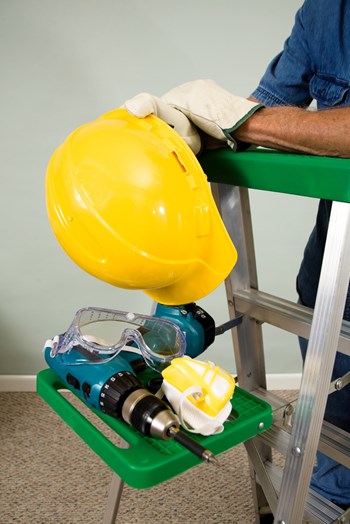
A building or community’s onsite staff and workers are an integral part of any co-op, condo or HOA. As they go about their daily duties on behalf of your board and residents, your workers must be provided with a safe working environment as well as any necessary equipment they need to keep them safe on the job. Protecting workers before injury occurs is the first step in keeping them safe and avoiding costly workers’ compensation claims.
OSHA and Local 32BJ
When dealing with worker training and safety issues, two organizations that you will likely hear about—and should no doubt become familiar with—are the Occupational Safety & Health Administration (OSHA) and Local 32BJ.
OSHA is the primary agency charged with creating regulations, setting standards and enforcing compliance with regard to worker safety.
According to a spokesperson for the group, “OSHA creates and enforces regulatory standards that require certain precautions to be taken in order to ensure the safety and health of workers. The tasks maintenance [building or association] workers perform are covered by several of these standards. It is also important to note that OSHA offers free, confidential onsite safety and health consultation services.”
More information regarding these standards as well as other assistance can be found on OSHA’s website, at www.osha.gov. OSHA provides a wealth of safety and health topics pages with free information to show employers and employees how to stay safe and healthy on the job. Go to the site and click the alphabet at the top of the home page to explore the many resources available. Additional information about OSHA’s consulting services is information is available at: www.osha.gov/dcsp/smallbusiness/consult.html.
“OSHA’s role is the same in all industries, it is an enforcement agency that sets the standards and does inspections,” says Harvey Staple, CSP, ARM, of Safety & Risk Control Services, Inc., in Metuchen.
Their major goal is to address those businesses that have a high number of losses. They target companies and industries that are at least 20 percent above the industry incidence rates. These numbers are obtained through mandatory filing of statistics with either state departments of labor or OSHA directly. OSHA also follows up on complaints by employees of unsafe working conditions. They will inspect these sites on a priority basis. OSHA will also respond to major accidents and investigate conditions. OSHA does offer some compliance assistance but this always has the enforcement viewpoint,”
SEIU Local 32BJ is the largest building service workers union in the country and represents more than 100,000 workers in New York, New Jersey, Connecticut, Pennsylvania, Maryland, Virginia and Washington, D.C. Union members include cleaners, doormen, porters, maintenance workers, window cleaners, security guards, superintendents, and theater and stadium workers. It also offers various training sessions and opportunities for its members.
“All staff members and property managers can benefit from health and safety training to avoid accidents,” says Kate Ferranti, deputy director and spokesperson for Local 32BJ, “and any such training plans are determined by the individual residential buildings. If the employees are participants in the 32BJ Training Fund, there are classes that include significant content on training, including Industrial Training.”
“32BJ’s Training Fund, a labor management partnership, can help ensure employees receive proper personal protection equipment and training, and can conduct walkthroughs to ensure compliance if issues arise,” says Staple.
“Most unions offer some training to their members to make them more viable to the employers. They usually do some OSHA training. Unions have played a less active role in this area. In some cases Unions did in the past conduct site inspections of sites their members worked out to identify hazards, but this has not been a major activity,” says Staple.
On-the-Job Injuries
According to OSHA, the most common accidents and injuries suffered by residential building staff members are sprains and strains (including many back injuries), cuts and lacerations, and bruises and contusions.
“According to the 32BJ Health Fund, building staff members typically injure themselves on the job through slips, trips, and falls. Other injuries include ergonomic problems (i.e., back pain, wrist injuries), machine guarding (pinch points), minor electrical injuries, and exposure to chemical household-related products,” says Ferranti.
“In my experience the accident types are either strains or sprains form lifting carrying and reaching for items. They also have falls from ladders and slips and falls as they walk over items and trip. They also have cuts and abrasions caused by the close space they have to work in like pipe chases and in cabinets. The real problem is they handle many jobs and don’t always have the appropriate tools to do the jobs so they make do,” says Staple.
The type of training your staff need depends largely on the nature of the work they will be performing. But regardless of the type of work your staff members are doing, if you are their employer, it is your responsibility to make sure that they are properly trained.
“Property staff must have training appropriate for the types of jobs and tasks they are performing. If they work on electrical equipment, they need to be qualified. If they work with chemicals, they need to be trained in the safe use of those chemicals. If they are performing servicing and maintenance on equipment, it is possible they will need training in the control of hazardous energy (lockout/tag-out.) It is their employer’s responsibility to ensure the workers are trained on the hazards to which they are exposed,” says the OSHA spokesperson.
But, he cautions, although the union may provide training on safety and health to its members, it is ultimately the employer’s responsibility to ensure that employees are adequately trained, following safe work practices, and are provided and wearing the proper personal protective equipment.
“In regard to training, OSHA requires all employers to train the employees in the hazards they work with. This includes: electrical safety, locking out power sources when they work; confined spaces when they have to work in areas which have hazardous atmospheres or conditions [that] are usually not occupied; as well as fire protection, emergency preparedness, chemical hazards…and proper use of personal protective equipment (PPE). And depending on the hazards and PPE they may require specialized training in hearing conservation and respiratory protection,” says Staple. In addition, he adds, staff must know how to handle accident situations especially if blood or human tissue, (blood born pathogens) is present.
“Specific equipment use may also require training depending on what they are doing such as use of pesticides, herbicides, powder actuated equipment, blasting work, use of mechanized equipment such as bulldozers, forklifts, and so on. The training is the responsibility of the employer. If this outside service they would have to train their employees, if they are employed by the property, the property is responsible for the training. In many of the cases the training is required annually,” says Staple.
“As for the property managers, they should receive training in the basics of OSHA requirements, proper ways of communicating and motivating safety and the workers compensation laws. These are minimums,” says Staple.
The Employer’s Responsibilities
Employers have specific responsibilities when it comes to keeping workers safe.
“Employers must provide most types of personal protective equipment, with a few exceptions, such as non-specialty safety-toe footwear, logging boots, everyday clothing, and clothes specifically designed to protect against the weather (parkas, winter gloves, rain coats, etc.) They must also ensure that it is being used correctly,” says an OSHA spokesperson. For more detailed information, refer to OSHA standards 29 CFR 1910.132(h), located online.
In addition, the property manager has certain duties and responsibilities as well.
“It is the property manager’s responsibility, as management, to ensure that his or her employees are complying with all applicable OSHA regulations. If OSHA conducts an inspection and there are violations of OSHA standards, the employer may receive citations that include monetary penalties; employees are not penalized. This makes it important that employers make themselves aware of potentially hazardous conditions and situations and take corrective action immediately. OSHA’s website has more information available regarding its multi-employer work site policy as well.
Responsibilities, Injuries and
Workers Compensation
The owner of a workplace is required to make sure that their staff has a safe working environment. For example, if a building owner notices a potential hazard, he or she is legally obligated to make this known to contractors working on the property. Owners, if they are the employers, are also responsible for providing safety equipment.
“Building owners are required to provide whatever safety equipment is needed. OSHA specifically requires that the employer pay for the PPE, i.e. masks, respirators, safety gloves, face shields, specialized clothing etc. In addition OSHA states that the employer is responsible for proving a safe workplace—this means safety equipment if needed. It is the option of the employer as to the type as long as it provides the needed protection. Items that are trade tools of the trade such as hand tools and power tools can be required of the employee, but the employer has the responsibility to make sure the equipment to be used is safe,” says Staple.
Staple also notes that OSHA recently passed specific guidelines outlining the employer’s responsibility to provide and pay for PPE. Again, details can be found on OSHA’s website.
“The building owner has the legal responsibility to point out hazards present in the operation to any contractor used. If the workers are employees of the property they are totally responsible for promoting safety and making sure the workers are trained and well supervised to do the job properly,” says Staple.
Even with the most thorough training and after taking every possible precaution, your workers might still experience on-the-job injuries. In some cases, this is where workers’ compensation will kick in.
Workers’ compensation, notes Ferranti, is determined on a case-by-case basis. “If workers’ compensation applies, workers’ comp will investigate why an accident occurred,” she says.
“If the person injured is an employee, the workers’ compensation system is a no fault system meaning blame isn’t placed and the worker is paid based on statute for his injury. This usually means he is paid 70 percent of his pay up to a maximum for lost days after seven days. The employee’s medical expenses are paid as well with no deductible to the employee. The entire payment is handled by the employer’s workers compensation insurer under specific state guides,” says Staple. For more information on this, visit http://lwd.dol.state.nj.us/labor.
There’s an old adage that says an ounce of prevention is worth a pound of cure. This is especially true when it comes to keeping your community’s staff and workers safe. By learning and becoming familiar with the rules and regulations associated with staff safety, your community will be way ahead of the game when it comes to worker, staff and resident safety.
Stephanie Mannino is a freelance writer and a frequent contributor to The New Jersey Cooperator.






Comments
Leave a Comment